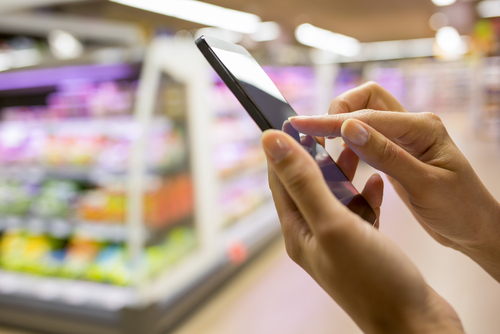Smartphones are embedded within every aspect of our lives. Ofcom’s recent Communications Market report (2013) revealed that 77% of 16-24 year olds and 51% of adults in the UK own one, and that 20% would miss using their mobile the most out of any media if it were taken away.
The smartphone has become the consumer’s umbilical cord to the digital world, connecting them to their social networks, and informing, entertaining and empowering them.
The evolution of the internet gave the consumer the power to be as well informed as the retailer. The smartphone allows them to carry that power around with them, with the freedom to consult and question assentations or seek out reviews and recommendations at any time, in any place.
With this potential for constant connection the traditional silos of the store, marketing and the web are having to merge. Brands need to adopt an omni-channel digital approach to better understand their consumers’ needs, behaviours and preferences, and tailor their communication and engagement accordingly. A fragmented approach only results in missed opportunities and consumer frustration so a single view of the customer is vital.
Today’s consumer has grown accustomed to the relationship models of digital giants such as Amazon. My own relationship, for example, with Amazon is consistent across all touch points. To me there is one entity – Amazon – and it is clear it knows me as a single but rounded individual.
Know me, know my location
Brands will see benefits in supporting consumers’ mobile habits. Stores that support free WiFi, for example, are more generously looked upon than those that don’t. A recent survey by On Device Research revealed that three quarters (74%) of consumers would be happy for a retailer to send a text or email with promotions while they were using in-store free WiFi.
This is a trend that we will see more and more of, with House of Fraser recently running a promotion with O2 using such an approach and John Lewis rolling out free WiFi across its stores.
When consumers are nearby or in-store, brands should employ context location aware offers and context sensitive marketing – or as IBM calls it, multichannel precision marketing – making use of consumers’ real-time behaviour to deliver immediate, personalised content and offers. The aim is to initiate dialogue with shoppers to increase loyalty and sales, whether by email, text alert or in app notifications.
>See also: FEATURE: Mobile collaboration in the enterprise
Be in the moment
Stores have to be about the brand, not just their products; about the experience, not just sales. There are considerable opportunities for retailers to augment the in-store experience with digital engagement.
The time a consumer spends online prior to entering a store doing research means brands need to deliver exactly the right content at the right time with even greater precision. Digital should be another tool used to nudge the consumer to make a purchase.
This can be achieved in different ways. Near field communication (NFC) was the great hope for location based marketing and is used in some stores to great effect. Burberry’s London flagship store is the best example of this, where scannable tags hang from clothes, which prompt special mirrors to turn into screens that play a video showing how the item was carefully made by hand.
One drawback to NFC is that the technology is very short range, requiring the user to actively touch a tag to receive information or offers and the software is not built into all smartphones. QR codes can also be used to deliver content direct to the consumer, but again they require active engagement and are unaware of any consumer data.
Another option is iBeacons, which are low-power and low-cost Bluetooth transmitters supported by all recent iPhones and by Android. They broadcast unique IDs that are picked up by dedicated apps and can deliver tailored content or offers to the consumer’s smartphone based on their profile.
Of the three approaches, iBeacons holds the greatest promise for highly personalised engagement, but it is up to brands to present the added value of using a branded iBeacon app to consumers, whether that is in terms of loyalty, ease-of-use, or payment, offers or added benefits.
The decision to offer either a mobile optimised website or app solution is increasingly being negated by the need to have both. Whatever the case, it’s imperative that the experience suits consumer needs, so investing in what is of most value to them is critical in the early development stage. Functionality and the availability of information should be the primary purpose for a mobile site or app.
The data deluge
Using location-aware technology and dedicated branded apps gives brands the perfect opportunity to collect detailed information about their consumers. Setting aside the privacy issues and assuming the value exchange to the consumer is attractive, then we have the problem of analysing this data and using it to inform our business decisions.
Wearables, the Internet of Things and mobile all need powerful data analysis tools for brands to make sense of and profit from the raw material gatherable. While aggregated data correlations can give powerful insights, it is important to have a single view of the customer to gain the most return.
Alternative payment models are gaining ground and in the next couple of years we are likely to finally see the arrival of the digital wallet. Google, Apple, PayPal, Square, Amazon, VISA and others have been gearing up for the supremacy in this new battleground for some time.
Whatever the final solution, it will live in or be tethered to your smartphone, reducing the friction involved in paying for products, easing the path to consumer gratification.










